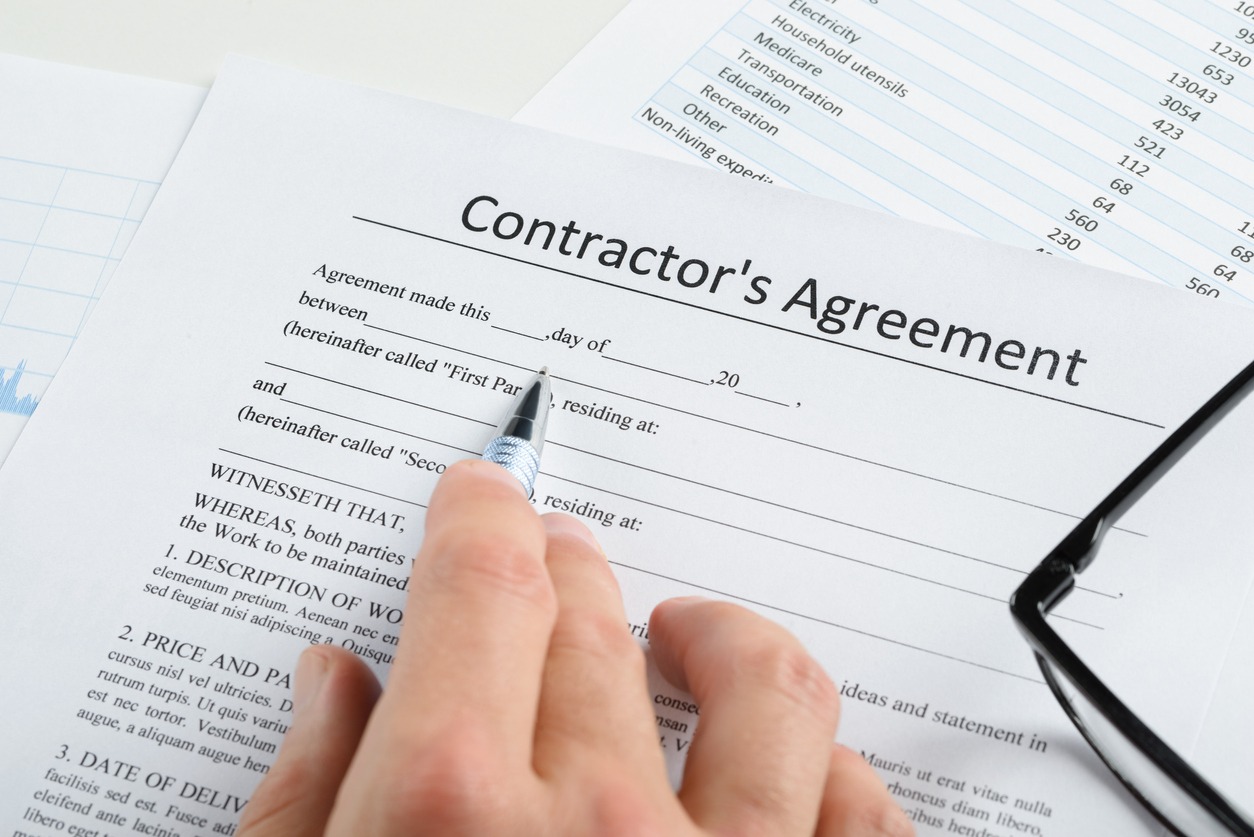When it comes to maintaining and repairing a home, homeowners often face a variety of tasks that can range from simple fixes to more complex projects. Not everyone possesses the necessary skills or confidence to tackle such repairs, leading to the consideration of hiring a professional. A handyman is typically a skilled generalist capable of handling a wide array of home maintenance tasks. They can prove invaluable to those who either lack the time or expertise to carry out these home repairs themselves.
Choosing the right handyman involves more than just finding someone who can perform the job. It requires understanding the specific services offered by handymen, determining the scope of repairs needed, and ensuring the professional hired has the right expertise and qualifications. Factors like verifying their license and insurance, obtaining estimates, and discussing job specifics are vital steps in the selection process. Agreeing on payment terms and preparing for the handyman’s arrival are also key aspects of hiring the right professional, as they impact both the execution and outcome of the work to be done.
Key Takeaways
- Homeowners hire handymen for a variety of repairs and maintenance tasks.
- Proper evaluation of a handyman’s expertise and credentials is crucial.
- Clear communication and agreed-upon payment terms ensure satisfactory job completion.
Understanding Handyman Services
Handyman services encapsulate a broad range of home maintenance, repair, and improvement tasks that necessitate a skilled professional to efficiently and effectively complete the work.
Types of Handyman Work
Handymen provide an array of services that extend across various tasks, from minor to moderate complexity. These typically include:
- Repair: Addressing wear and tear throughout the home, such as fixing leaky faucets or mending damaged drywall.
- Maintenance: Performing routine checks and upkeep to ensure home systems and fixtures function properly, like cleaning gutters or servicing HVAC systems.
- Installation: Setting up new fixtures or features, which can range from appliances to shelving units.
- Home Improvement: Upgrading aspects of the home to enhance its value and livability, for instance, painting rooms or assembling furniture.
Common Tasks Performed by a Handyman
Benefits of Hiring a Professional
Opting for a professional handyman offers significant advantages:
- Expertise: A seasoned handyman brings a wealth of experience, ensuring repairs and installations are carried out correctly.
- Time Savings: Homeowners save valuable time as the handyman takes over tasks that might otherwise consume their weekends or free time.
- Convenience: With one contact, multiple home maintenance needs can be addressed, avoiding the need to hire different specialists for each task.
- Safety: Professionals have the right tools and knowledge to perform the work safely, mitigating risks associated with DIY projects.
- Quality Work: Professional work often comes with a guarantee, providing peace of mind that the services rendered will last.
Assessing Your Home Repair Needs
Accurate assessment of home repair needs allows homeowners to address issues systematically and ensures that they effectively communicate these needs to a handyman.
Identifying Repair and Maintenance Tasks
Homeowners should begin by methodically listing every repair and maintenance task throughout the property. This encompasses plumbing issues like leaky faucets, electrical concerns such as faulty wiring, or more significant concerns like roof repair. It is helpful to include both indoor and outdoor spaces, ensuring that areas like the deck or siding are not overlooked.
- Plumbing: Check all faucets, pipes, and toilets.
- Electrical: Test switches, outlets, light fixtures and do basic troubleshooting of circuit breaker trips.
- General Maintenance: Inspect doors, windows, and floorboards.
- Outdoor: Evaluate the deck, fences, and exterior structures for damage.
Prioritizing Home Projects
Once the tasks are outlined, prioritizing becomes crucial. Immediate attention is needed for issues that present safety hazards or could lead to more severe damage if left unaddressed. Maintenance tasks that affect the home’s function or could potentially incur higher costs in the future should come next, followed by cosmetic improvements.
- Safety Concerns: Electrical problems, gas leaks.
- Preventative Maintenance: Roof repair to prevent leaks, insulation to improve energy efficiency.
- Functionality: Plumbing repairs, structural fixes.
- Aesthetic: Painting, updating fixtures.
By organizing and prioritizing home repair needs, homeowners can provide clear and concise information to a handyman, resulting in efficient and effective service.
Finding a Local Handyman
When the need arises for home repairs or improvements, knowing how to find a reliable local handyman is essential. From searching strategies to leveraging word-of-mouth recommendations and online platforms with thorough reviews, homeowners have multiple avenues to locate skilled professionals.
Search Strategies
The quest for a skilled handyman begins with using the right search strategies. Homeowners can start by entering their zip code into local service databases or home improvement websites. These services often allow access to a list of professionals with varying areas of expertise. It’s crucial to cross-reference the responses with other sources to ensure the handymen have good reputations and the necessary qualifications for the job.
- Step 1: Enter your zip code in a trusted local services database.
- Step 2: Review the list of available handymen in your area.
- Step 3: Cross-reference received information for reliability.
Word of Mouth Recommendations
Word of mouth has long been a powerful tool for finding trustworthy service providers. A positive endorsement from friends, family, or neighbors who have had firsthand experiences with a handyman can be invaluable.
- Key Benefits:
- Personal experience
- Trustworthiness
Ask around and get names of handymen who performed well on previous jobs, noting the nature and quality of the work they completed.
Online Platforms and Reviews
Many homeowners turn to online platforms to find a handyman. Websites like TaskRabbit or Thumbtack provide a roster of local services, complete with customer reviews and ratings. On these platforms, handymen can be vetted by reading feedback from previous clients and examining their work history. It’s important to look for a pattern of positive reviews and check any before-and-after photos of their work when available.
- Trusted Online Sources:
- TaskRabbit
- Thumbtack
- HomeAdvisor
Examining the average price for handyman services along with the user ratings helps one find a professional who offers great value for their expertise.
Evaluating Handyman Expertise
When hiring a handyman, it’s essential to scrutinize their experience, assess their range of skills and knowledge, and understand any specializations they may have. These factors determine the professional’s ability to perform the job efficiently and effectively.
Experience and Past Work
A handyman’s experience can often be assessed by examining the breadth and depth of their past projects. It’s advisable for homeowners to request a portfolio or a list of references from past clients to gauge the handyman’s proficiency. For example:
- Years of Experience: Look for a handyman with a well-established history in the business.
- Types of Projects Completed: Consider if they have handled tasks similar to what you need.
Skills and Knowledge
The skills and knowledge of a handyman encompass a variety of areas from basic repairs to complex installations. A proficient handyman should possess a comprehensive set of skills, which may include being a jack of all trades, but with the ability to perform tasks with a higher degree of competence and precision. Key areas to consider include:
- Plumbing
- Electrical work
- Carpentry
- Home maintenance and repair
Ensure they can demonstrate familiarity with the latest building codes and safety regulations.
Specializations
While some handymen are generalists, others may have specializations in specific trades, such as plumbing or electrical work, which often require specific qualifications or certifications. When a job requires specialized knowledge, ensure the handyman has the appropriate credentials. For instance:
- Plumber: Check for a valid plumbing license.
- Electrician: Verify if they’re a certified electrician for any electrical work.
By evaluating these qualifications and areas of expertise, homeowners can make an informed decision when selecting a handyman.
Verifying Licensing and Insurance
Before hiring a handyman, it is essential that homeowners confirm the professional has the necessary license and insurance to provide protection and assurance of quality work.
Licensing Requirements
Each state has its own licensing requirements for handymen and contractors. A valid trade license is typically required for large projects to ensure that the individual has met the local or state regulations. Homeowners should ask to see this license and check its currency, as it demonstrates the handyman’s legitimacy and knowledge in their field.
- Verification: Homeowners should ask for the license number and verify it with the appropriate licensing body.
- State Variance: Since requirements vary by state, checking state-specific regulations is crucial.
Insurance and Liability
A reputable handyman should carry liability insurance and, if they have employees, workers’ compensation insurance. These insurances protect both the homeowner and the handyman in the case of accidents or damage. Homeowners should request proof, such as a certificate of insurance, and contact the insurance provider to verify that the policy is active and covers the scope of the projected work.
- Liability Insurance: Protects against damages that might occur during the job.
- Workers’ Compensation: Covers injuries that the handyman or their employees might sustain on the job.
Getting Estimates and Quotes
When hiring a handyman, it’s essential to understand how costs are calculated and to request multiple estimates to ensure fair pricing for the required services.
Understanding Cost Factors
The cost of hiring a handyman can vary significantly based on several factors. Handyman rates typically range from $50 to $80 per hour or $320 to $600 per day, influenced by the complexity of the job and the materials required. Time is often a determining element, with some handymen setting a minimum charge or number of hours to account for travel and setup time. While smaller tasks may have a flat-rate price that includes both labor and materials, larger or more complex jobs require a detailed estimate to account for unforeseen issues and additional expenses.
Requesting Multiple Estimates
They should always request multiple estimates to compare the services and rates of different handymen. When soliciting quotes, it’s important to provide a clear scope of work and request an itemized estimate that breaks down the costs for labor, materials, and any additional rates. Remember that while the cheapest estimate may save money upfront, it’s crucial to consider factors like experience and customer reviews to weigh overall value. Reputable handymen should provide a free estimate template, allowing clients to easily compare the quotes they receive.
Discussing the Job with Handymen
When hiring a handyman, the clarity of communication about the scope of work sets the stage for success. Discussing the job thoroughly ensures that both parties understand the expectations and required tasks.
Questions to Ask
Prior to securing handyman services, one should conduct a thorough interview, addressing a comprehensive set of questions designed to ascertain their qualifications and suitability for the job. Consider the following key inquiries:
- Are you licensed and insured? Verifying credentials protects all parties.
- Can you provide a detailed contract? Confirm that all expectations are formalized in writing.
- Do you offer a guarantee for your work? It’s important to know how issues post-completion are handled.
- May I contact your references? Past clients can offer insights into the quality and reliability of the handyman’s work.
Communicating Your Vision
It’s crucial for the homeowner to convey a clear vision of the project to ensure their satisfaction with the completed work. Key aspects include:
- Describing the scope: Articulating the full list of tasks, from minor repairs to larger-scale jobs.
- Setting priorities: Establishing an order in which the tasks should be addressed.
- Budgeting: Discussing the budget early helps manage costs and set realistic expectations.
Properly discussing the job with handymen dramatically increases the likelihood of a satisfactory project outcome.
Agreeing on Payment Terms
In hiring a handyman, clarity in payment terms is paramount to a successful working relationship. This section breaks down the two essential components: the contract and payment schedule, and the structure of deposits and final payments. These terms serve as the financial backbone of the professional agreement.
Contract and Payment Schedule
The contract should explicitly state the payment schedule, outlining each party’s expectations. This schedule must include:
- Payment Milestones: A list of work phases, upon each of which a corresponding payment is due.
- Payment Amounts: Specific figures or percentages allocated for each milestone.
A sample payment milestone table may look like this:
| Work Phase | Percentage of Total Cost | Due Date |
|---|---|---|
| Project Start | 20% | Date |
| Mid-Project | 40% | Date |
| Project Completion | 40% | Date |
Deposits and Final Payments
An initial deposit provides security to the handyman and commitment from the client. This is a portion of the total cost, typically ranging from 15% to 50% of the total project cost. The remaining balance is settled upon completion of the project. The contract should detail:
- Deposit Amount: The upfront percentage of the total cost.
- Final Payment: Confirmation of the work completed to satisfaction, triggering the release of the final payment.
Clear, defined payment terms ensure both the handyman and the client are protected and understand when and what payments need to be made throughout the engagement.
Preparing for the Handyman’s Arrival
When a homeowner secures a handyman’s services, thorough preparation ensures both efficiency and safety. Clearing the work area and confirming accessibility with the necessary supplies at hand are critical steps.
Clearing the Work Area
The homeowner is responsible for removing personal belongings, furniture, and other obstacles from the work area. This not only facilitates a smoother workflow for the handyman but also protects the homeowner’s items from potential damage. It is advisable to
- Clean up any clutter
- Box up small items
- Relocate furniture to another room
Accessibility and Supplies
Ensuring accessibility is crucial for the handyman’s timely commencement and continuation of work. The homeowner should also verify that the technical requirements are met by checking if the handyman needs any special equipment or supplies that are not typically carried. This may include:
- Provision of power outlets for tools
- Availability of a clear path to the work site
- Organization of supplies and materials, if provided by the homeowner
By following these guidelines, the homeowner will have successfully set the stage for the handyman to work efficiently and effectively.
Ensuring Quality and Follow-up
After a handyman completes a job, the client’s focus should shift to evaluating the quality of the work and engaging in a constructive follow-up process. This involves a thorough check of the completed work, providing clear feedback, and considering long-term reliability and support options.
Checking Completed Work
Clients should inspect the finished job meticulously to ensure that all agreed tasks meet their standards. A reliable handyman will often guarantee their work, providing assurance that any issues that may arise post-completion will be addressed. Here’s a checklist to assist in evaluating the work:
- Functionality: Verify that all installations and repairs function as expected.
- Finishing: Look for thoroughness in details like paintwork, caulking, and cleanup.
- Adherence to Specifications: Check if the work aligns with the initial job description and agreed-upon terms.
- Safety and Compliance: Ensure all work complies with relevant codes and safety standards.
Providing Reviews and Feedback
Feedback is valuable for both the handyman and future clients. Referrals and reviews can significantly influence a handyman’s reputation. Clients should consider the following:
- Direct Feedback: Constructively communicate satisfaction or concerns with the handyman.
- Online Reviews: Post honest reviews on platforms relevant to the service provided.
- Referrals: If satisfied, referring the handyman to friends or family can be a powerful endorsement.
A handyman’s response to feedback and follow-up requests can further indicate their commitment to service quality and reliability.
Frequently Asked Questions when to Consider when Hiring a Handyman
When hiring a handyman, it’s essential to be equipped with the right information to ensure you find a trustworthy professional, understand the scope of their services, and agree on a fair rate.
How do I find a reliable handyman in my area?
A reliable handyman can often be found through referrals from friends or family members. Online directories and review platforms also serve as a good starting point for identifying well-rated professionals in your vicinity.
What typical services does a handyman offer?
Handymen typically offer a broad range of services, including minor repairs, maintenance work, fixture installations, and sometimes more specialized tasks such as plumbing or electrical fixes.
What are the factors to consider when negotiating rates with a handyman?
Factors to consider include the complexity and duration of the job, the handyman’s experience, and local market rates. Materials needed for the job may also affect the overall cost.
Are there any apps or websites that are recommended for finding reputable handymen?
Websites such as HomeAdvisor, Angie’s List, and Thumbtack, as well as apps specific to home services, are often recommended for their user reviews and the ability to compare different professionals.
How can a handyman legally operate independently?
To legally operate independently, a handyman must adhere to local business licensing requirements, which can include obtaining a handyman license, general contractor license, or specialty licenses for certain trades, as well as liability insurance.
What are the average hourly rates for handyman services?
The average hourly rates for handyman services can vary widely based on location, expertise, and the nature of the job. Rates typically range from $30 to $70 per hour, with higher charges for specialized tasks.
Final Thoughts
Choosing the right handyman for your home maintenance and improvement needs is a crucial decision that can significantly impact the quality and longevity of the work done. The essential tips outlined in this blog post provide a structured approach for homeowners to navigate through this selection process. From verifying credentials and references to clearly discussing your project needs and expectations, each step is instrumental in ensuring a successful collaboration. It’s important to remember that a good handyman is not just about the skills and tools they bring, but also about their reliability, communication, and ability to understand and execute your vision. By taking the time to do thorough research and making informed decisions, you can find a handyman who not only meets your immediate repair needs but also becomes a trusted go-to for future home projects.
Ultimately, the relationship with a handyman is built on trust and mutual understanding. The tips we’ve discussed, such as getting detailed quotes, signing contracts, and maintaining open communication lines, are about fostering this trust and ensuring transparency in the working relationship. As home repairs and improvements are an ongoing part of homeownership, finding a handyman who can reliably and efficiently handle these tasks is invaluable. By following these essential tips, you can ensure that your home is in capable and caring hands, allowing you to enjoy a well-maintained home without the stress and uncertainty that often comes with home repair projects.




